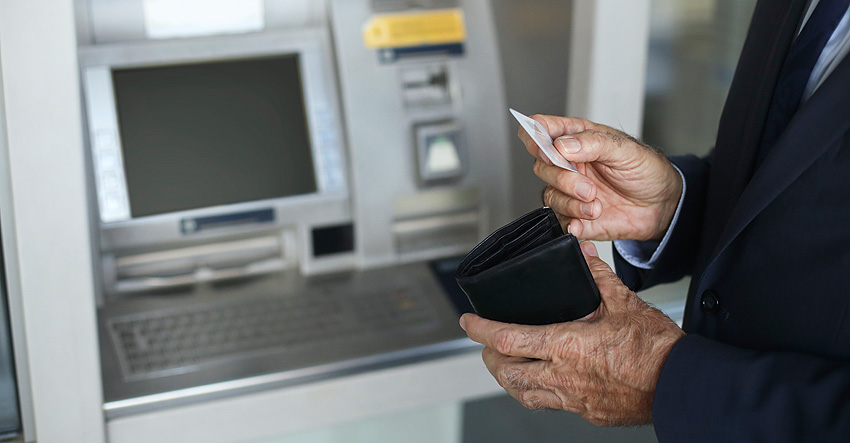Help our elderly with their finances – withdrawing cash from an ATM
23/06/2022
Even in the digital age, cash is still an essential means of payment. One of the simplest ways to obtain cash is from an ATM, but for our elderly it may not be an easy enough task to tackle without help.
To begin with, we can explain to them the advantages of using ATMs: speed, avoiding unnecessary queues and waits at branches, and availability at any time, without depending on branch opening hours. And then, it is a good idea to accompany them to the ATM for the first few times until they gain enough confidence.
Using an ATM to obtain cash is simple, but we explain it here step by step so that it can serve as a crib sheet for our elderly. Remember that the operation may vary slightly depending on the bank.
Firstly, choose the right ATM.
- If possible, choose ATMs with video surveillance or security personnel, in facilities that allow the doors to be locked.
- Use the ATMs of the bank of which you are a customer or of banks that you have an agreement with to avoid commissions.
- Explain the basic rules of caution: that no strangers should be watching you withdraw money and that you should cover the keyboard or touch screen with your hand while entering the code.
Second, take out the money:
Although the successive screens that appear during the cash withdrawal operation are not always identical for all banks, the following steps are usually repeated:
- Insert the card or passbook facing upwards, according to the illustration showing which way to do it. If the ATM allows contactless card use, you only need to bring the card nearer.
- A message on the screen will ask for the code. Remind him/her to always confirm it by pressing the enter or confirm keys. If you do not remember or you are unsure of the number, press the cancel key.
- Subsequently, a screen may ask whether you wish to withdraw the money from your current account or from the credit on your card (if it is a credit card). If you want to use the credit on your card, you should bear in mind that there may be a charge for this option.
- The next message will ask you to enter the amount to be withdrawn and confirm it by pressing enter or confirm. Another option to avoid possible mistakes is to withdraw one of the pre-established amounts on the screen.
- The subsequent screen will warn if the card issuer is going to charge a fee for the transaction, which is uncommon when using your own bank’s ATM.
- The next message offers proof of the transaction.
- The last message asks if you wish to carry out another operation, offering a yes or no answer. If you only want to withdraw cash, press no.
Thirdly, while the machine processes the transaction and once it has been processed:
- A screen asks you to remove your card. You have to be careful at this point.
- After removing the card, the banknotes will be available almost immediately. It is a good idea not to delay when taking the banknotes, as some ATMs limit the waiting time for the money available in the dispenser. It is common to take time to put your card away in your wallet.
- It is always a good idea to count the money to make sure that you have received the correct amount and, if not, go into the bank to solve the problem. If the bank is closed or if it is a cash dispenser outside a bank branch, you should call the bank or the incident number displayed on the ATM to resolve problems.
- Our elderly should be asked to take extra precautions once they have taken the money. Once the money has been counted, it should be put away immediately and we should check that there is no cause for alarm.
To increase the safety of the operation, the following can also be useful:
- It is good practice for our elderly and the general public to check their balances frequently to avoid theft and fraud. We should contact the bank immediately if we notice any withdrawals that we have not made.
- Another good tip, also for everyone, is to set a low limit for regular cash withdrawals, to limit the risks in case of theft or loss of the card.



